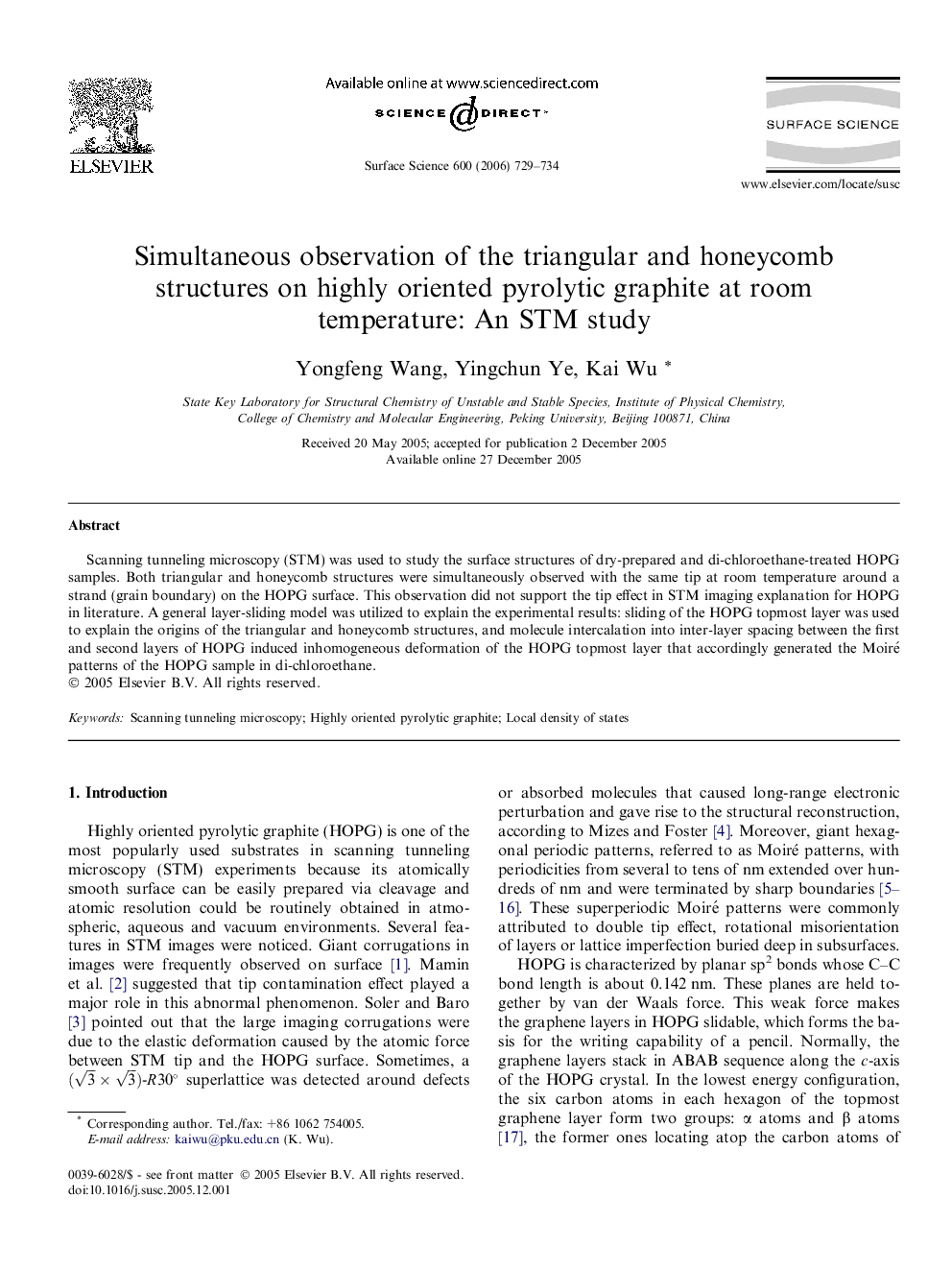| Article ID | Journal | Published Year | Pages | File Type |
|---|---|---|---|---|
| 5426881 | Surface Science | 2006 | 6 Pages |
Scanning tunneling microscopy (STM) was used to study the surface structures of dry-prepared and di-chloroethane-treated HOPG samples. Both triangular and honeycomb structures were simultaneously observed with the same tip at room temperature around a strand (grain boundary) on the HOPG surface. This observation did not support the tip effect in STM imaging explanation for HOPG in literature. A general layer-sliding model was utilized to explain the experimental results: sliding of the HOPG topmost layer was used to explain the origins of the triangular and honeycomb structures, and molecule intercalation into inter-layer spacing between the first and second layers of HOPG induced inhomogeneous deformation of the HOPG topmost layer that accordingly generated the Moiré patterns of the HOPG sample in di-chloroethane.
